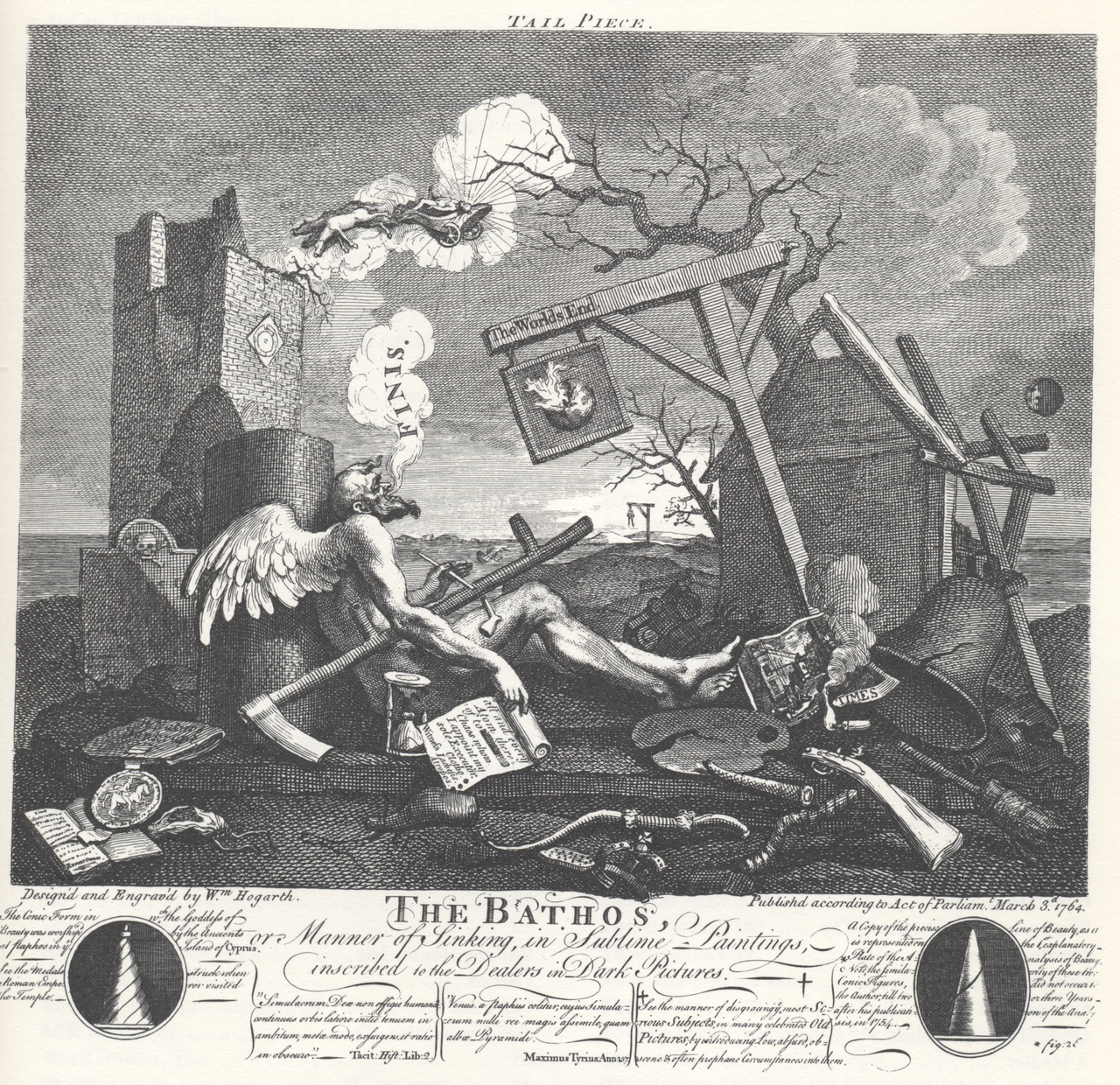The New York Times has posted a lovely analysis of my favorite woodblock print by Hokusai, “Ejiri in Suruga Province” (circa 1830, from his “Thirty-Six Views of Mt. Fuji” series), in which a sudden blast of wind is the invisible subject of the piece. Nature and landscape and social class and quotidian humor, all meeting together in a pivotal moment of art history where Dutch imports influenced the Edo-era artists whose own innovative works quickly influenced the French.
Tag: art history
-
Hokusai’s Sudden Gust
-
Rives Bfk Acronym Explained

As an art person I’ve enjoyed a good amount of time around lithography and other drawing media, and now I’m engaged to a children’s book illustrator who largely works in watercolor, so I’ve spent a fair amount of time at art supply shops buying paper. One thing has bugged me for years about our fine rag paper purchases, though: what’s up with the “BFK” in “Rives Arches BFK”? I’ve asked professors, professional printers, other artists, and even the Internet, with no great leads, but I finally coaxed the answer out of Google today. From The Albumen & Salted Paper Book: The history and practice of photographic printing, 1840-1895:
It is no wonder that only two paper mills in the world managed to consistently produce a paper of the necessary quality, and these two mills were able to maintain their monopoly from the 1860’s until approximately World War I. They were the above-mentioned Blanchet Frères et Klébler Co. in Rives, France (hence their product was known as the “Rives” paper) and Steinbach and Company, located in Malmedy, Belgium (at that time part of Germany). Steinbach paper was known outside Germany as “Saxe” paper.
The product that established their paper monopoly (duopoly?) — the exploding new field of photography! More to the point, 3D stereography, the Victorian postcard origin of a Tumblr meme:
In the late 1850’s and especially after 1860, two new factors in photographic technology and practice generated a great demand for albumen paper. The first of these was the stereograph; its ability to transport the viewer to distant scenes with the illusion of three-dimensional reality depended largely on the smooth surface and fine detail of albumen paper. Stereo views were extremely popular, and created a corresponding demand for albumen paper. Nearly all stereo views before 1890 were made on albumen paper.
This 3D thing will catch on one of these days…
-
Hokusai Glasses

Megana-ya (Seller of Eyeglasses), by Hokusai, circa 1811-1814, part of a incredibly great collection of health-related Japanese woodblock prints housed at the University of California, San Francisco. Having recently bought a new pair of glasses, I can relate.
(Via Pink Tentacle)
-
Saint Expeditus of the GTD

A photo in the recent Big Picture post about the men trapped in the Chilean mine features a small impromptu shrine to San Expedito, a saint I hadn’t heard of before (I’m not Catholic or even especially religious so I’m ignorant about a lot of these things). In English he’s known as Saint Expeditus, and the name’s a pretty big giveaway: with one foot he’s crushing a crow cawing the word ‘cras’ (the ancient Roman’s onomatopoeia for a crow call, but more importantly it’s also the Latin word for tomorrow — wordplay!) and he bears aloft a cross with the inscription ‘hodie’ (today). So basically he’s the patron saint of Getting Things Done.
Other things I like about this guy: his very existence and origin story is a bit sketchy, maybe even attributable to human language error, he’s big in the realm of Haitian Vodou and African-American hoodoo (while looking this stuff up, I came across more than one source from New Orleans instructing that you should leave him offerings of Sara Lee pound cake! weirdly specific!), and according to a 2004 Wired article, he’s the patron saint of nerds and hackers.
-
Matisse Photos
Art and Science Collide in Revealing Matisse Exhibit from Northwestern News on Vimeo.
Computational image processing researchers at Northwestern University teamed up with art historians from the Art Institute of Chicago to investigate the colors originally laid down by Matisse while he was working on Bathers by a River:
Researchers at Northwestern University used information about Matisse’s prior works, as well as color information from test samples of the work itself, to help colorize a 1913 black-and-white photo of the work in progress. Matisse began work on Bathers in 1909 and unveiled the painting in 1917.
In this way, they learned what the work looked like midway through its completion. “Matisse tamped down earlier layers of pinks, greens, and blues into a somber palette of mottled grays punctuated with some pinks and greens,” says Sotirios A. Tsaftaris, a professor of electrical engineering and computer science at Northwestern. That insight helps support research that Matisse began the work as an upbeat pastoral piece but changed it to reflect the graver national mood brought on by World War I.
The Art Institute has up a nice mini-site about Bathers and the accompanying research, including some great overlays on top of the old photos to show the various states the painting went through during the years of its creation.
(Via ACM TechNews)
-
Maya Blue

Ancient pigment history is fascinating. From dried beetles (carmine) to sea snails (Tyrian purple) to ground up human and feline mummies (the rather uncreatively-named Mummy brown), colors come from some weird places. I’d heard of Maya Blue before, but didn’t realize that it’s more of a process rather than a specific mineral pigment. The color was made by intercalating indigo (añil) into fine clay over continuous heat. The slow fusing with clay made the paint exceptionally resistant to weather and acidic conditions (and even modern solvents), and the process wasn’t fully understood / rediscovered until a few years ago. Cooking it up may have been ritualistic, as the incense copal was often burned in the same bowls. The color was important in sacrifice rituals as well: when the Sacred Cenote of Chichen Itza was dredged back in 1904, a a layer of blue silt 14-feet-thick was found at the bottom (sensationalism aside, the silt was likely more from all of the blue-painted pots tossed in than the blue-painted people…I hope).
From Discoblog:
The researchers knew that the Mayans made their blue by heating the pigment with palygorskite (a type of clay); their analysis showed that this heating allowed the pigment to enter tiny channels in the clay which are sealed after the mixture cools, protecting and keeping the pigment true blue for centuries.
-
Michaelangelo Sistine Brain

From Concealed Neuroanatomy in Michelangelo’s Separation of Light From Darkness in the Sistine Chapel in the May, 2010, issue of Neurosurgery:
In the winter of 1511, Michelangelo entered the final stages of the Sistine Chapel project and painted 4 frescoes along the longitudinal apex of the vault, which completed a series of 9 central panels depicting scenes from the Book of Genesis. It is reported that Michelangelo concealed an image of the brain in the first of these last 4 panels, namely, the Creation of Adam. Here we present evidence that he concealed another neuronanatomic structure in the final panel of this series, the Separation of Light From Darkness, specifically a ventral view of the brainstem.
Could be pareidolia, but given Michelangelo’s breakthroughs in anatomical rendering and that God is depicted here with a rather non-standard bearded neck, who knows?
(Via NYTimes.com)
-
Hito Steyerl: In Defense of the Poor Image

The poor image is a copy in motion. Its quality is bad, its resolution substandard. As it accelerates, it deteriorates. It is a ghost of an image, a preview, a thumbnail, an errant idea, an itinerant image distributed for free, squeezed through slow digital connections, compressed, reproduced, ripped, remixed, as well as copied and pasted into other channels of distribution.
[…]
At present, there are at least twenty torrents of Chris Marker’s film essays available online. If you want a retrospective, you can have it. But the economy of poor images is about more than just downloads: you can keep the files, watch them again, even reedit or improve them if you think it necessary. And the results circulate. Blurred AVI files of half-forgotten masterpieces are exchanged on semi-secret P2P platforms. Clandestine cell-phone videos smuggled out of museums are broadcast on YouTube. DVDs of artists’ viewing copies are bartered.3 Many works of avant-garde, essayistic, and non-commercial cinema have been resurrected as poor images. Whether they like it or not.
– Excerpted from Hito Steyerl’s piece in e-flux journal #10
(Via Rhizome)
-
William Hogarth‘s Final Engraving: The Bathos

William Hogarth’s final engraving, a self-satirical illustration of the end of time, parodizing the bathetic imagery in his contemporaries’ works. I admire a guy who can go out on a bit of pessimist humor. (see also this explication of the print)
-
Looking at the Stars Always Makes Me Dream As
Looking at the stars always makes me dream, as simply as I dream over the black dots representing towns and villages on a map. Why? I ask myself, shouldn’t the shining dots of the sky be as accessible as the black dots on the map of France? Just as we take a train to get to Tarascon or Rouen, we take death to reach a star. We cannot get to a star while we are alive any more than we can take the train when we are dead. So to me it seems possible that cholera, tuberculosis and cancer are the celestial means of locomotion. Just as steamboats, buses and railways are the terrestrial means. To die quietly of old age, would be to go there on foot. Vincent van Gogh, quoted on Roger Ebert’s Journal (itself a great read)

